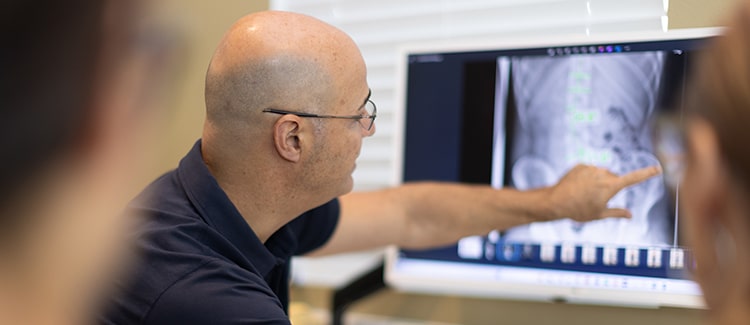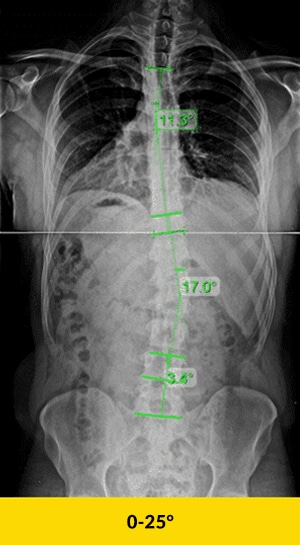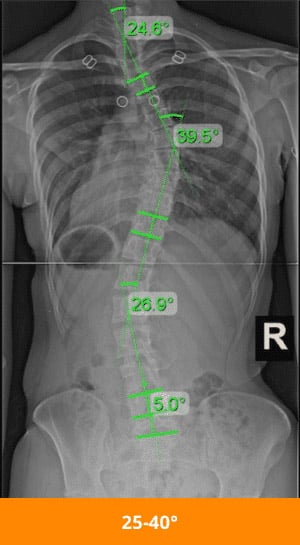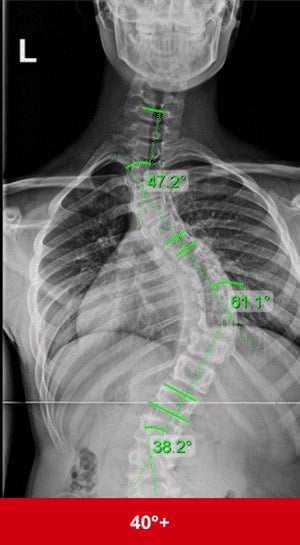Scoliosis Overview
Understanding a Very Difficult Diagnosis
Scoliosis is a medical condition characterized by an abnormal lateral curvature of the spine, often appearing as an “S” or “C” shape when viewed from the back.
While the exact cause of scoliosis can be unclear, it is typically classified into three main types: idiopathic, congenital, and neuromuscular. Idiopathic scoliosis, the most common form, usually manifests during adolescence and has no known specific cause. Congenital scoliosis is present at birth and results from spinal malformations, while neuromuscular scoliosis arises from neuromuscular conditions such as cerebral palsy or muscular dystrophy.
At Scoliosis Reduction Center®, we are dedicated to providing comprehensive care and management for individuals with scoliosis. Our approach emphasizes early detection and personalized treatment plans that address the unique needs of each patient.
Through a combination of advanced diagnostic tools, targeted chiropractic adjustments, and supportive therapies, we aim to reduce spinal curvature, alleviate pain, and improve overall spinal health.
Whether you are seeking preventative care, corrective treatment, or ongoing support, our team is here to guide you on your journey to a healthier spine and a better quality of life.

Three Stages of Scoliosis

Mild Scoliosis
25 degrees or less
Mild scoliosis carries a significant risk of progression (up to 22%). Once the scoliosis passes 20°, risk of progression more than triples to 68%.

Moderate Scoliosis
25 to 40 degrees
Research suggests that if the Cobb angle is initially diagnosed at 25 degrees or higher, it will most likely progress.

Severe Scoliosis
40 degrees or more
Without treatment, further progression is almost certain. Severe scoliosis carries a 90% risk of progression.
Scoliosis By Age
Scoliosis may be diagnosed at any age. While it is predominantly diagnosed in teens and pre-adolescents, it also commonly occurs in people of any age. While scoliosis itself appears in all age groups, how it is approached and treated varies greatly from age to age. We break down how it affects different ages differently on our Scoliosis by Age page.
Traditional Scoliosis Treatment Options
0-25°
Mild Scoliosis
Observation
Observation is generally referred to as “watch and wait.” Even though this is an option, no active treatment is provided.
Most studies show that scoliosis can progress during someone’s life, either rapidity during puberty, or slower during adulthood. Watching and waiting for curve to get bigger makes every treatment option more challenging in the future.
25-40°
Moderate Scoliosis
Traditional Bracing
The most-commonly prescribed brace for scoliosis today is the Boston brace. A Boston brace is typically made from one of several prefabricated mold options.
This prefabrication is the major concern of this type of brace, as effectiveness of the brace will depend on the modifications made, if any, by the fitter. A poorly designed brace can have a negative impact on scoliosis.
40°+
Severe Scoliosis
Scoliosis Surgery
Surgery has one primary goal, to halt the progression of scoliosis by using some type of spinal fusion. Successful surgery is considered when the scoliosis progression has been halted, however it has been increasingly recognized by scoliosis experts that this always doesn’t mean a healthy person. Things like physical appearance, pain levels, quality of life may be negatively affected by surgery. If surgery doesn’t achieve the desired outcome, option for further treatment can be limited.